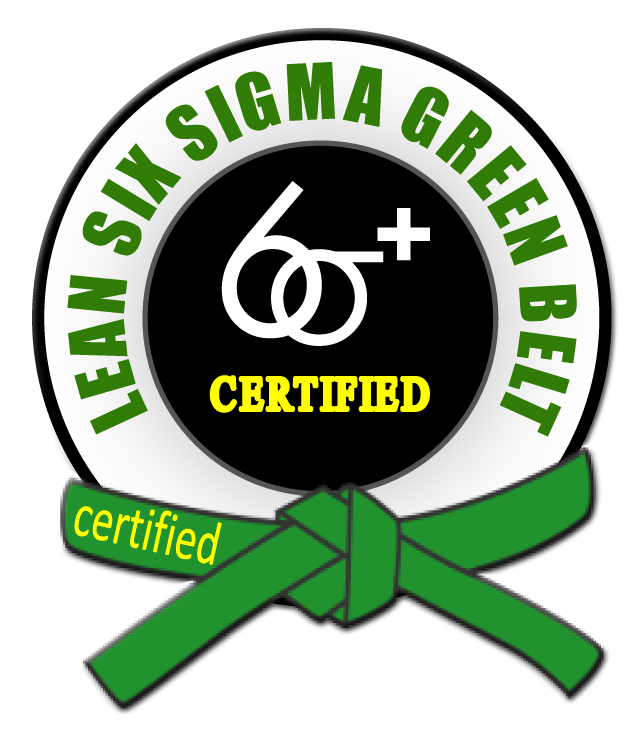Introduction to Six Sigma
- History of Quality (Deming, Juran, JIT, Ishikawa, Taguchi, etc.)
- Evolution of Six Sigma
- Defining Six Sigma – philosophy and objectives
- Overview of Six Sigma DMAIC process
Stakeholders & Setting up a Six Sigma Project
- Identifying and Documenting stakeholder requirements
- Identifying stakeholders and customers
- Data collection and analysis
- Determining critical requirements
- Project Selection Criteria
- Identifying performance metrics
- Using Financial criteria to evaluate project benefits
- Maximizing project benefits for the organization
- Project Planning
- Creating Project Charter
- Charter Negotiation
- Managing Team Dynamics
- Initiating teams
- Stages of team evolution
- Maslow’s hierarchy of needs
- Motivation Techniques
- Conflict Resolution Techniques
- Management / Leadership styles
- Roles played by people in a project
- Important project management & planning tools
Six Sigma Methodology – Define
- Inputs – Need for six sigma project, Executive management sponsorship, core team identified
- Tools
- Organization hierarchy
- High level process maps
- High level Pareto charts
- Idea generation and categorization tools
- Outputs
- Project charter
- Established metrics
- Problem statement
- Roles & responsibilities
Six Sigma Methodology – Measure
- Objectives of Measure Phase
- Inputs – the outputs of the Define phase
- Tools
- Data collection tools and techniques
- Measurement scales
- Validation techniques (Gauge R & R)
- Statistical distributions
- Data mining
- Run charts
- Process map
- Stakeholder tools
- Process costs
- Outputs
- Well defined processes
- Baseline process capability
- Process parameters affecting CTQs
- Cost of poor quality (COPQ)
- Measurement system
Six Sigma Methodology – Analyze
- Objectives of Analyze Phase
- Inputs – outputs of the Measure phase
- Tools
- Ishikawa diagram
- Failure mode and effects analysis
- Hypothesis testing
- Process capability study
- Outputs
- Important causes of defects
- Special and common causes of variation
- DPMO and sigma level
Six Sigma Methodology – Improve
- Objectives of Improve Phase
- Inputs – outputs of the Analyze phase
- Tools
- Returns on investment
- Solution design matrix
- Design of experiment
- Taguchi robustness concepts
- Response surface methodology
- Project planning and management tools
- Prototypes
- Outputs
- Cost / benefit for different solution
- Selection of solutions for implementation
- Implementation plan
Six Sigma Methodology – Control
- Objectives of Control Phase
- Inputs – outputs of the Improve phase
- Tools
- Control plan
- Statistical process control
- Lean enterprise
- 5S
- Kaizen
- Kanban
- Total productive maintenance
- Measurement system reanalysis
- Outputs
- Implemented solutions
- Revised measurement system
- Control plan for sustaining benefits
- Improves process capability
- Lessons learned
Lean
- A Value Stream Map
- Lean is Speed
- Total Supply Chain
- Lean Six Sigma Logistics
Case Study
-
- Case Study Part 1
- Case Study Part 2
- Case Study Part 3
